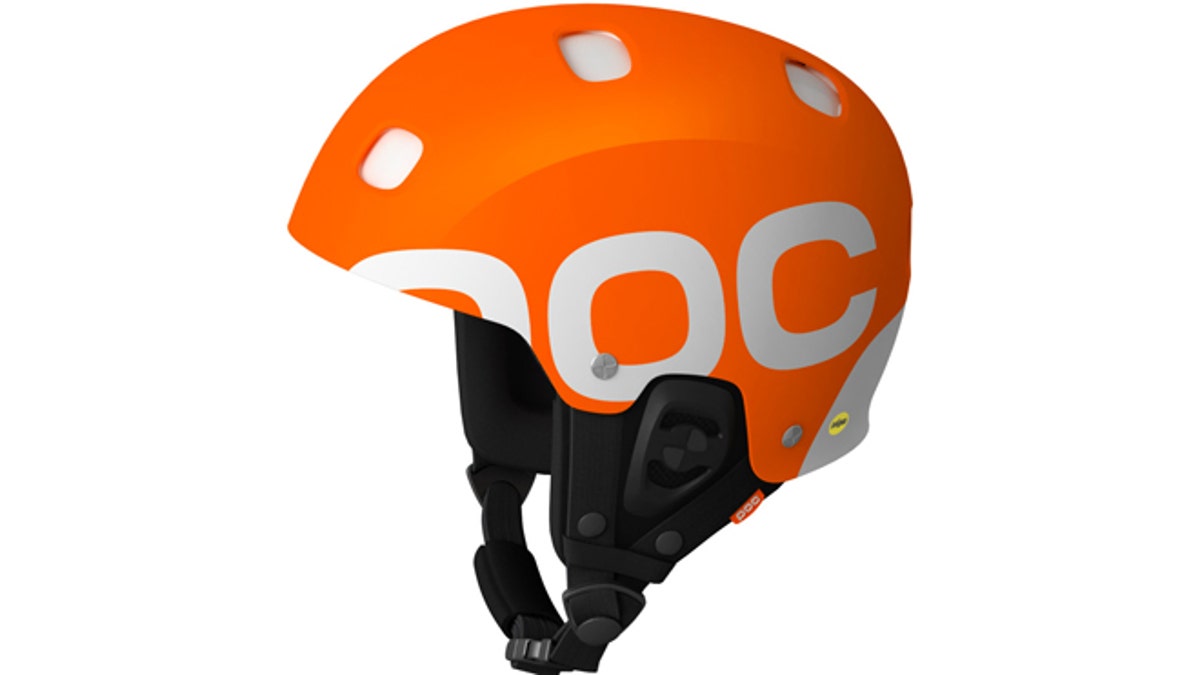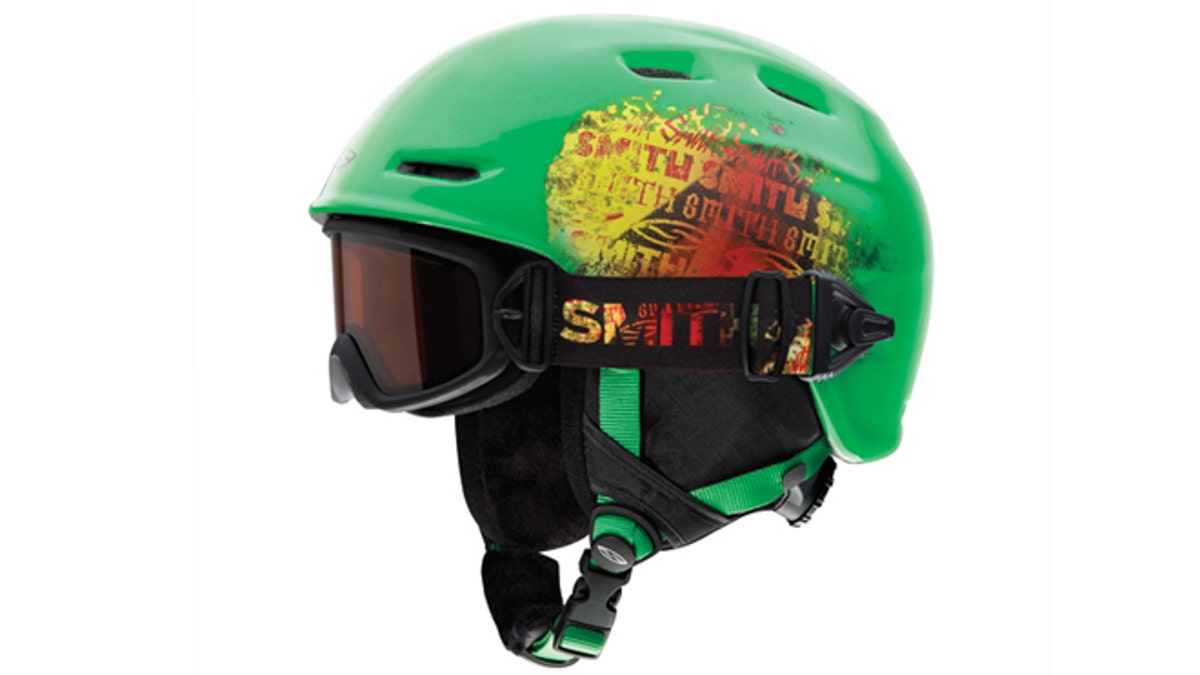The best technology in the world won't help you if you refuse to use it. Fail to put a password on your phone, and someone is going to steal your personal information. Fail to buckle up, and in an accident you're going to suffer for it. The same goes for hitting the slopes where helmets still aren’t ubiquitous.
1. What's on your noggin?
There's a ton of tech built into helmets these days, from Bluetooth headphones to GPS to GoPro video camera mounts, but the primary reason to don one is to protect your noggin. According to several studies, a helmet can cut the risk of head injury by up to 60 percent. Most sports and medical authorities, such as the American Academy of Orthopaedic Surgeons, recommend snow boarders and skiers use a helmet. And yet up to half the people on the hill still don’t wear protection.
Guilty as charged.
Growing up skiing, helmets were for race day, not recreational mogul runs. And while I wouldn’t think of getting on a motorcycle without a full-face helmet, I still didn’t apply the same thinking to the slopes. But now I’m mending my ways, and if you don’t wear a helmet, you should too.
Most of the high-tech gimcracks on helmets, like built-in headphones, can be distracting. Cranking the tunes on a black diamond run can deliver an added adrenaline rush, but it can also reduce the chances that you’ll hear a warning shout or notice an out-of-control neophyte slamming down the run. So rather than focusing on MP3 options, here’s what to consider in shopping for a helmet.
Comfort: Proper fit is one of the most important factors. If a helmet is uncomfortable, you're going to hate it, and you're not going to wear it. Or if you do wear it, it's going to diminish your enjoyment. That said, you need a snug fit with the front brim of the helmet sitting just above the eyebrow. For someone who's spent a life on the slopes with nothing on their pate, wearing a helmet requires a period of adjustment.
MIPS: Multi-directional Impact Protection System or MIPS technology is designed to reduce the rotational force on one's cranium in a crash. Essentially, it allows the outer shell of the helmet to slide slightly on impact. Its designers claim that it can reduce brain injuries and a growing number of helmet makers are adopting the technology.
One Hit Wonders: Helmets are generally one hit wonders (some racing models are an exception). In other words, if you smack your cranium on the ice, you've compromised the integrity of the helmet. That’s what it’s designed to do: absorb the impact instead of your skull (the same goes for motorcycle helmets, incidentally, and children's car seats). So after a serious impact, toss the helmet and get a new one. NB: Don’t buy a used helmet, for obvious reasons.
Goggles: Check the fit for your goggles. If you've got a favorite pair, make sure you bring them to the store when you try on the helmets.
Prices: For a good, well-built helmet you’ll pay anywhere from under $100 to $350. A quick check of offerings from Skis.com offers a wide array of choices for kids and adults. For most skiers and snowboarders a half-shell helmet is a good choice. It has soft ear pads (which allow you still hear noise around you) versus full-shell models that completely enclose the ears. Full-face models are designed primarily for folks heading to the Super G.
Here’s a quick rundown of some of the half-shell options.
2. POC Receptor Backcountry MIPS, $250

(POC)
If there’s a company that’s succeeded in making helmets cool, it’s POC. Sleek and solidly constructed the Receptor model says, I know what I’m doing on the snow. This model boasts a durable ABS/PC outer shell and the MIPS system, which will make more aggressive skiers feel more secure.
One downside is that I found the POC a little finicky to get a proper fit. POC includes extra pads you can insert inside, and after some experimentation, I improved the feel, however it never got to the point where I completely forgot I was wearing a helmet. The chin strap also never seemed to settle into the right spot for me, proving that fit is extremely subjective.
3. Smith Cosmos, $80

(Smith)
The ideal head protection for a young beginner, the Cosmos helmet comes with an integrated pair of goggles. The goggles don't have a full strap but instead clip onto the sides of the helmet. It means your kid is less likely to lose them in the ski lodge. An adjustment dial on the back also allows you to tweak the inner carriage to get a better fit—or more than one season out of the helmet. My 10-year-old tester found it delivered a comfortable fit.
4. Smith Vantage, $150 to $190

(Smith)
An extremely comfortable helmet for intermediate adult skiers, the Vantage has an active venting system. It uses a slider on the top that opens and closes vents to keep your head cool or warm, depending on conditions. An elastic pull strap on the back secures the goggles strap. There's a slight brim to this design and a dial adjustment in back like the Cosmos.
5. Scott Chase and Rove MIPS helmets, $100 to $165

(Scott)
With a soft black exterior, the Scott Chase has an interior to match that was snug and comfortable. It has a slight brim to help keep the sun out of your eyes and a passive venting system that helps keep one’s goggles fog free. Scott also has a dial adjuster to get a better fit. A hard plastic bracket in back snaps the goggle strap into place, but I struggled with one pair of goggles' outsized buckle.
Similar to the Chase model, the Rove also includes the MIPS technology. It also proved comfortable. However, it seemed to size slightly smaller than the Chase even though both helmets were rated for up to 59.5 cm. Again, a reminder to try before you buy.
The overall winner in my comfort conflagration was the Smith Vantage. It worked well with a pair of small and larger goggles from Smith and Scott, offering a more flexible fit than the others. Only slightly less form-fitting was the Scott Chase. I deducted marks for the goggles strap holder design, which was a little tougher to snap securely.
Some critics point out that there’s no direct statistical correlation yet between helmet use and preventing severe injuries. While helmet use is up, so were skiing and snowboarding fatalities last winter (54 fatalities at ski areas in the U.S.; in 36 of those cases, the victim was wearing a helmet). However, we are increasingly learning about the dangers of even mild concussions, and helmets do help in reducing those risks. Get one.
Follow John R. Quain on Twitter @jqontech or find more tech coverage at J-Q.com.
